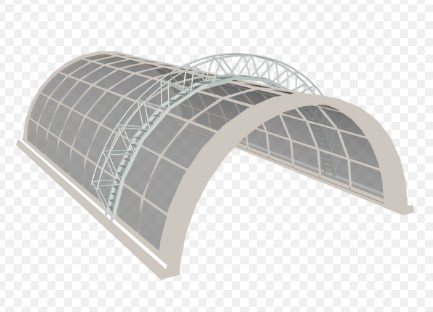In the dynamic and ever-evolving landscape of the Philippines, ensuring safe access to high places is crucial, especially for tasks like facade maintenance and cleaning. Traversing ladders, particularly the innovative SafeLadder, have emerged as essential tools for these high-access tasks. This guide provides an in-depth look at traversing ladders, their key features, and why they are an indispensable asset for safe and efficient operations.
What is a Traversing Ladder?
A traversing ladder is a specialized type of ladder designed to move along a fixed rail system, making it ideal for performing tasks on facades and other high areas. Unlike traditional ladders, traversing ladders can move horizontally along a rail, allowing users to position the ladder precisely where needed. This design enhances safety and efficiency, especially when working at significant heights.
The SafeLadder: A Game-Changer in Safe Access
The SafeLadder is a revolutionary traversing ladder that offers unmatched safety and convenience. It operates in conjunction with the SafeAccess rail system, which is securely installed on a building’s facade or parapet. The ladder’s base is equipped with wheels to ensure stability and ease of movement along the rail. With customizable features, including platforms, footrests, and telescopic sections, the SafeLadder adapts to various needs, making it a top choice for building maintenance.
Key Features of the SafeLadder
Innovative Movement Mechanism: The SafeLadder uses a range of trolleys, including motorized and manual options. Some models are battery-powered, allowing for effortless horizontal movement along the facade. This adaptability ensures precise positioning and efficient operation.
Customizable Accessories: The SafeLadder can be tailored with various accessories, such as platforms that extend above parapets, footrests for added comfort, and telescopic sections for height adjustments. These features enhance functionality and user comfort.
Safety and Durability: Constructed from lightweight yet durable aluminum, the SafeLadder is built to last. It adheres to rigorous safety standards, including EN353/1 for personal protective equipment and EN1808 for suspended access equipment. This compliance ensures that the ladder provides a high level of safety and reliability.
Why Choose Traversing Ladders for Facade Access?
Traversing ladders offer several advantages for facade access. Their ability to move horizontally along a fixed rail system allows for precise positioning, reducing the need for repositioning and enhancing efficiency. Compared to other access solutions, such as scaffolding or traditional ladders, traversing ladders provide greater stability and safety. This makes them particularly suitable for high-access tasks where safety and efficiency are paramount.
Safety Standards and Regulations for Traversing Ladders in the Philippines
In the Philippines, adhering to safety standards is crucial when using traversing ladders. The SafeLadder conforms to the EN353/1 standard for personal protective equipment and the EN1808 standard for suspended access equipment. These regulations ensure that the ladder meets stringent safety requirements, providing workers with reliable fall protection and operational security.
Maintenance and Care for Your SafeLadder
To ensure the longevity and safety of your SafeLadder, regular maintenance is essential. This includes routine inspections to check for wear and tear, as well as cleaning and servicing the ladder and rail system. Following the manufacturer’s maintenance guidelines and addressing any issues promptly will help keep your ladder in optimal condition.
Choosing the Right Traversing Ladder for Your Needs
When selecting a Traversing Ladder (SafeLadder) in the philippines, consider factors such as the height of the facade, accessibility requirements, and customization options. It is also important to choose a reliable supplier who can provide quality equipment and support. In the Philippines, there are several trusted suppliers and manufacturers that offer a range of traversing ladders and accessories to meet your specific needs.
Takeaway
The SafeLadder, combined with the SafeAccess rail system, represents a state-of-the-art solution for high-access tasks. Its customizable features, advanced movement mechanisms, and adherence to rigorous safety standards make it a valuable tool for facade maintenance and other elevated operations. Investing in a high-quality traversing ladder not only enhances safety but also improves operational efficiency.

